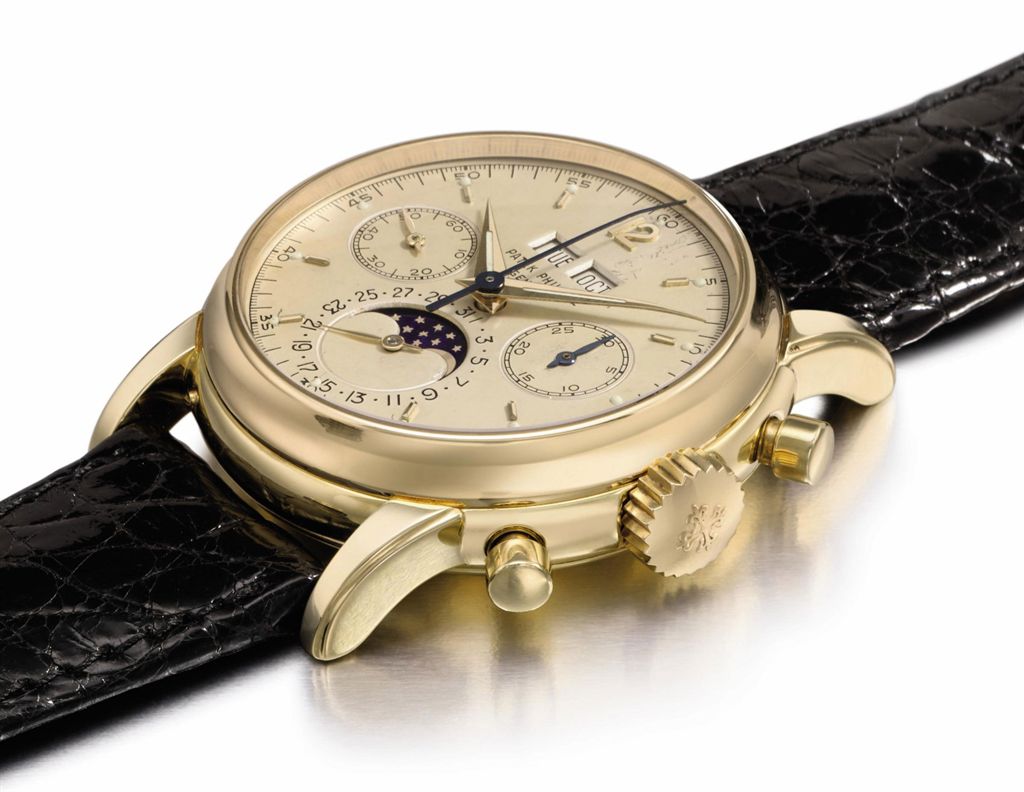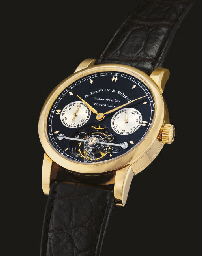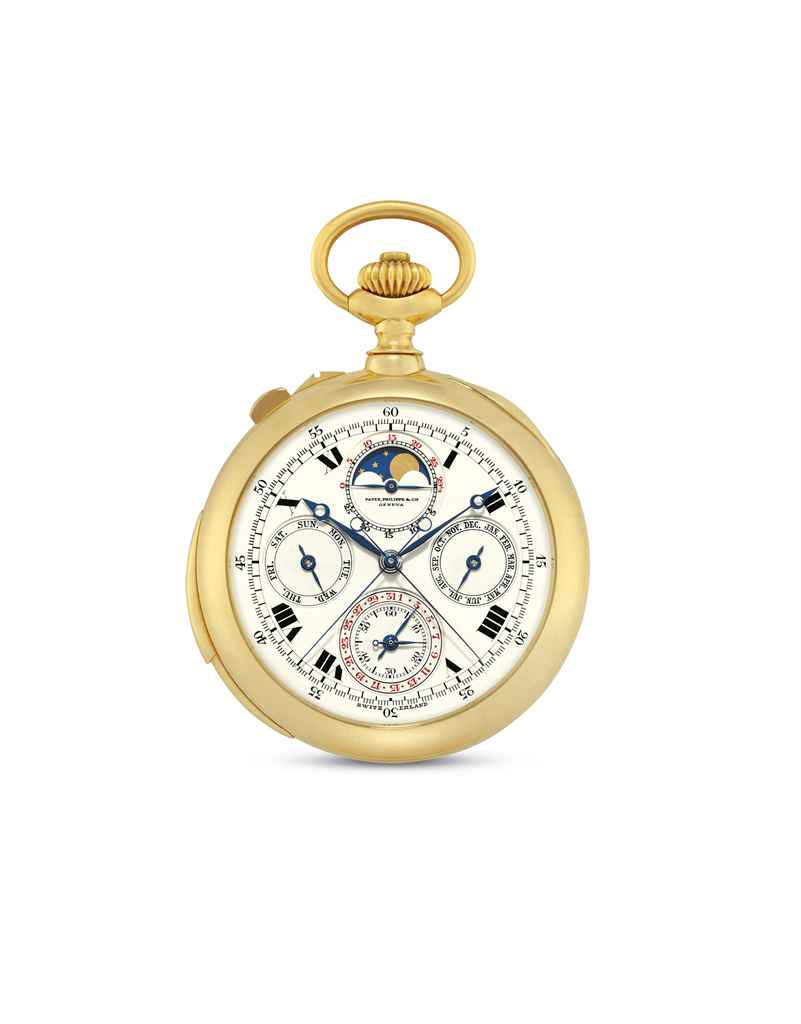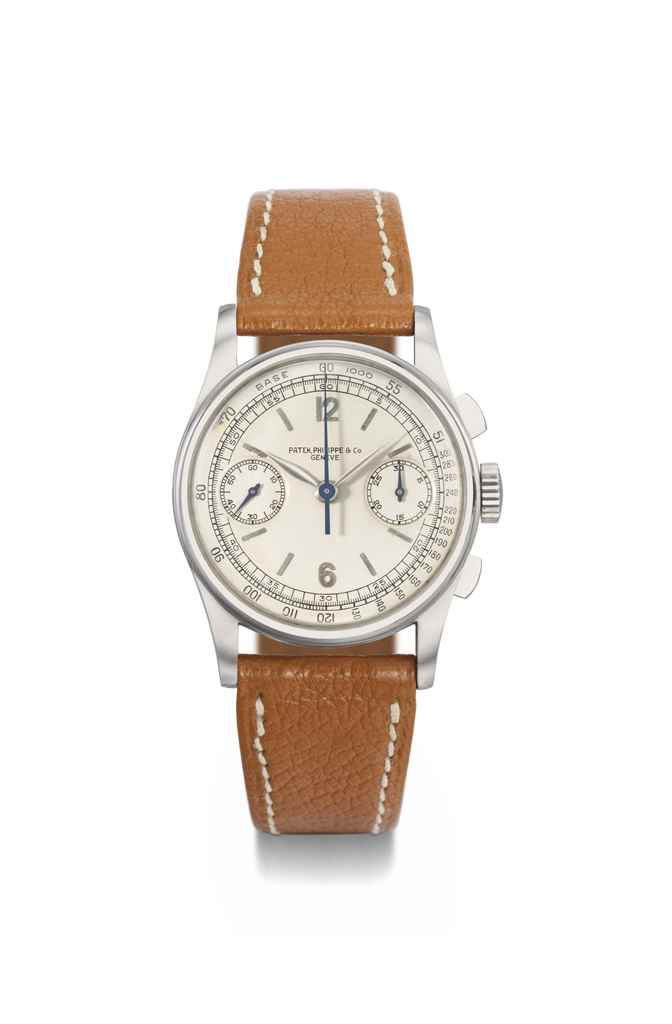A fine and rare Charles II forged iron and brass turret clock movement William Clement London, dated 1672 The posted wrought-frame with finely forged polyhedral finials and gothic ogee corbels to the widened upper and lower ends of each corner post, the rectangular horizontal top and bottom frames with lapped and screwed-tenon joints to the principal uprights at the angles and signed WILLIAM CLEMENT + LONDINI FECIT + 1672 + to the rail above the hammer pivot, the trains with brass wheels now reversed due to wear and laid out end-to-end opposing each other pivoted with brass bushes set into vertical movement bars applied to cross-members spanning between the sides of the frame, both incorporate key-wound wooden-cored longitudinal barrels and have a 2.75 inch space between them for a centre-swinging pendulum, the three-wheel going train with four-spoke wheel crossings, brass escape wheel engaging with pallets (incomplete) pivoted between extensions to the movement bars, with the centre fitted with a pendulum backcock and continuing upwards to form the top pivot of a vertical worm-gear incorporating short helix to facilitate lift-release of the strike train and terminating with a pinion driving angled take-off work, the strike train with countwheel facing the space between the trains, twin arbor warning via simple locking arm to the fly arbor fitted with a large twin-vane fly set outside the frame over the barrel winding square, the frame also applied with remote hammer lever engaging with pins set into the rim of the greatwheel, (no pendulum weights or other accessories), the frame measuring 67cm (26ins) long by 69 (27ins) wide by 41cm (16ins) high; 77.5cm 30.5ins high overall. Provenance: The property of a private collector. Sold at Christies, London Barometers, Fine Clocks & Watches Wednesday 7th October 1981 (lot 99) for £4,800 hammer with previous owners listed as A. Loveday of Hereford, Peter Mactaggart of Welwyn and The Hon. G.W. Bennett. In 1671 William Clement supplied a turret clock for Kings College, Cambridge, this clock was traditionally considered to be the earliest surviving timepiece to be regulated by anchor escapement and long pendulum supporting the possibility that Clement was the inventor. This view was further perhaps fortified by an entry in Smith, John Horological Disquisitions (1694) which states 'Mr William Clement had at last the good fortune to give it the finishing stroke, he being indeed the real contriver of that curious kind of long pendulum, which is at this day so universally in use among us'. From this it would be fair to interpret Smith as not crediting Clement with the actual invention of the long pendulum, but perhaps is instead indicating that he devised the arrangement subsequently universally adopted which must be the recoil anchor.Two years later William Derham in The-Artificial Clock-Maker puts the case forward for Dr. Robert Hooke who it is said demonstrated the long pendulum to the Royal Society soon after the Fire of London, however it is not clear whether this was with a form of recoil anchor escapement (although it is generally accepted that Hooke devised the spring pendulum suspension). Another contender for its invention is Joseph Knibb who, in early 1670, supplied a turret clock for Wadham College, Oxford, complete with anchor recoil escapement and long pendulum. But again there is no documentary evidence to support a view that Knibb actually devised this form of regulation. In 1677 William Clement was made a Free Brother of the Clockmakers Company and the following year was appointed Assistant by unanimous consent and approbation and for good reasons and especial esteem. He later served as Warden in 1690 and Master in 1694. In 1697 Clement signed the Oath of Allegiance and was from September of that year excused from attending meetings on account of his age. From April 1704 he received charity payments from the Company until his death in July 1709. The current movement is des
A fine and rare Charles II forged iron and brass turret clock movement William Clement London, dated 1672 The posted wrought-frame with finely forged polyhedral finials and gothic ogee corbels to the widened upper and lower ends of each corner post, the rectangular horizontal top and bottom frames with lapped and screwed-tenon joints to the principal uprights at the angles and signed WILLIAM CLEMENT + LONDINI FECIT + 1672 + to the rail above the hammer pivot, the trains with brass wheels now reversed due to wear and laid out end-to-end opposing each other pivoted with brass bushes set into vertical movement bars applied to cross-members spanning between the sides of the frame, both incorporate key-wound wooden-cored longitudinal barrels and have a 2.75 inch space between them for a centre-swinging pendulum, the three-wheel going train with four-spoke wheel crossings, brass escape wheel engaging with pallets (incomplete) pivoted between extensions to the movement bars, with the centre fitted with a pendulum backcock and continuing upwards to form the top pivot of a vertical worm-gear incorporating short helix to facilitate lift-release of the strike train and terminating with a pinion driving angled take-off work, the strike train with countwheel facing the space between the trains, twin arbor warning via simple locking arm to the fly arbor fitted with a large twin-vane fly set outside the frame over the barrel winding square, the frame also applied with remote hammer lever engaging with pins set into the rim of the greatwheel, (no pendulum weights or other accessories), the frame measuring 67cm (26ins) long by 69 (27ins) wide by 41cm (16ins) high; 77.5cm 30.5ins high overall. Provenance: The property of a private collector. Sold at Christies, London Barometers, Fine Clocks & Watches Wednesday 7th October 1981 (lot 99) for £4,800 hammer with previous owners listed as A. Loveday of Hereford, Peter Mactaggart of Welwyn and The Hon. G.W. Bennett. In 1671 William Clement supplied a turret clock for Kings College, Cambridge, this clock was traditionally considered to be the earliest surviving timepiece to be regulated by anchor escapement and long pendulum supporting the possibility that Clement was the inventor. This view was further perhaps fortified by an entry in Smith, John Horological Disquisitions (1694) which states 'Mr William Clement had at last the good fortune to give it the finishing stroke, he being indeed the real contriver of that curious kind of long pendulum, which is at this day so universally in use among us'. From this it would be fair to interpret Smith as not crediting Clement with the actual invention of the long pendulum, but perhaps is instead indicating that he devised the arrangement subsequently universally adopted which must be the recoil anchor.Two years later William Derham in The-Artificial Clock-Maker puts the case forward for Dr. Robert Hooke who it is said demonstrated the long pendulum to the Royal Society soon after the Fire of London, however it is not clear whether this was with a form of recoil anchor escapement (although it is generally accepted that Hooke devised the spring pendulum suspension). Another contender for its invention is Joseph Knibb who, in early 1670, supplied a turret clock for Wadham College, Oxford, complete with anchor recoil escapement and long pendulum. But again there is no documentary evidence to support a view that Knibb actually devised this form of regulation. In 1677 William Clement was made a Free Brother of the Clockmakers Company and the following year was appointed Assistant by unanimous consent and approbation and for good reasons and especial esteem. He later served as Warden in 1690 and Master in 1694. In 1697 Clement signed the Oath of Allegiance and was from September of that year excused from attending meetings on account of his age. From April 1704 he received charity payments from the Company until his death in July 1709. The current movement is des















Testen Sie LotSearch und seine Premium-Features 7 Tage - ohne Kosten!
Lassen Sie sich automatisch über neue Objekte in kommenden Auktionen benachrichtigen.
Suchauftrag anlegen